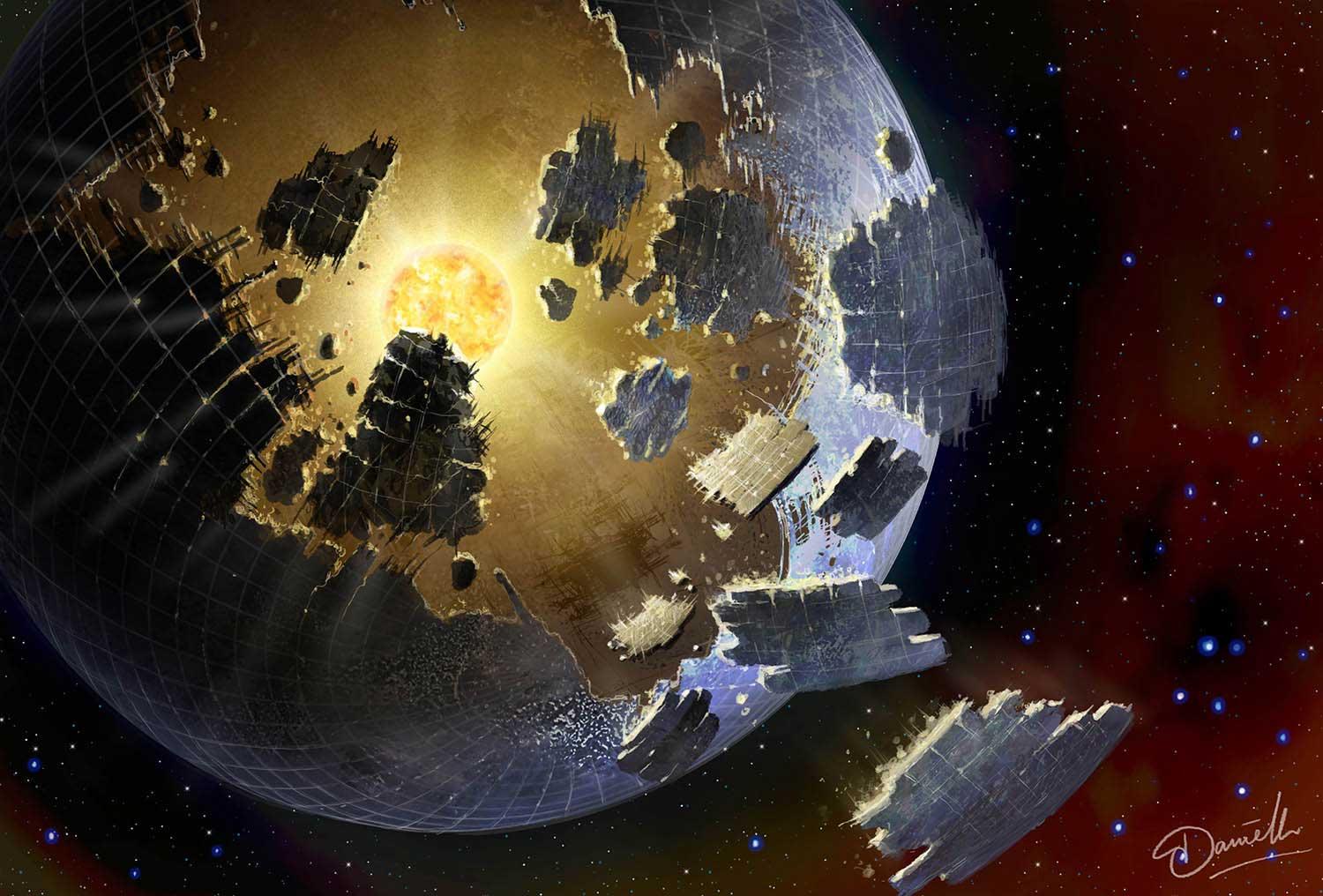As galaxies spread apart, extraterrestrials might want to assemble a nuclear "nest egg."

It’s often said that the search for aliens is too parochial — that our continuing efforts to locate cosmic radio broadcasts or laser beams are really just quests for analogs of ourselves.
Why so? Well, these efforts presume that extraterrestrials have enough curiosity to reach out to others in the galaxy, or at least send messages skyward for their own purposes (perhaps as a galaxy-wide newscast). These are motives we can understand because our descendants might do something similar.
But what about truly advanced beings? What would a higher-than-high-tech society do that others in the galaxy might notice? This is worth thinking about because broadcasting might not be their thing.
One possibility is that they would build or rearrange big stuff — in other words, engage in civil engineering on the scale of planets or larger. That would produce the kind of artifacts that astronomers might hope to see with their telescopes. Such undertakings would be a burden on Klingon taxpayers, so whatever they did would have to be worth the money.
The Ultimate Bummer
Can we imagine a super-sized infrastructure project that would be a justifiable expense for the galaxy’s truly superior societies? Dan Hooper, a physicist at Fermi National Accelerator Lab near Chicago, believes he’s thought of one.
He notes that if you’re a long-lived culture, planning to hang around for semi-eternity, then the expansion of the universe is the ultimate bummer. The star-filled galaxies are now known to be moving away from one another (although the stars within a galaxy won’t do this). Worse, the speed of their sprawl is increasing. Even a Hubble-like space telescope will someday be a bad investment for our distant descendants, as very few galaxies will be close enough for it to observe.
That would frustrate future astronomers, of course. But an alien populace might see the thinning of the cosmos as an existential threat. Stars are useful energy sources, and each galaxy contains a few hundred billion of them. But every day, these fuel reserves retreat to greater and greater distances.
Nuclear Nest Egg
Hooper suggests that aliens would have the foresight to grab these stars while the grabbing’s good. They would snag them from surrounding galaxies and park them in their backyards for future use — a kind of nuclear nest egg that would provide sustenance during a dark and lonely future.
Hooper doesn’t offer a detailed description of how aliens might accomplish this stellar roundup. But he notes that the energy for transportation could be harvested from the cargo itself — by building huge swarms of solar panels (so-called Dyson spheres) around the stars to be moved, and then using the collected energy to power some sort of rocket engine.
In other words, the stars’ own glow could be used to carry them off to someone else’s galaxy.
From the standpoint of discovering extraterrestrials, Hooper’s scenario has an interesting consequence: If any extraterrestrials have been collecting stars, we might be able to find their stockpiles simply by making detailed photos of galaxies — a routine activity for astronomers. If we see extended patches of light with the brightness of, say, thousands of stars — or a galactic region where stars seem to be missing — then we’ll know that someone (or something) was thinking long term: preparing for the inevitable cosmic winter by stocking up on necessities while they can.
There are problems with Hooper’s idea. If there are many super societies out there, taking stars might be equivalent to cattle rustling on the final frontier. After all, you might be depriving someone of their future livelihood, and who knows if they’d fight back?
And as a matter of physics, you’d have to transport the stars quickly. You can’t spend more than a few billion years hauling them home because stars are perishable goods — they burn out.
The need for speed complicates the problem, because a high velocity requires lots of energy. As an example, suppose someone lugs a star from 10 million light-years away to our galaxy at one percent the speed of light, or nearly 7 million miles per hour. That’s a long ride, and even at this formidable speed, it would take a billion years. That might be OK, as most stars won’t expire in that time. But the fuel’s the rub, because rather few bright stars radiate enough energy in a billion years to accelerate themselves to one percent of light speed.
So paying for the haulage with starshine is dicey. It’s roughly equivalent to buying something by mail order and having to pay many times the item’s cost for shipping. That’s clearly unattractive, but you can always say it’s a technicality to be left to the aliens to figure out.
Hooper’s idea is imaginative, even if its practicality is uncertain. But at least it doesn’t assume that the extraterrestrials are like us. In the movies, the gray guys spend their time filching our resources, leveling our cities or assaulting our bodies. They’re no more than hairless hooligans. But for a society that’s millions or billions of years beyond us, there might be more important things to do.
This article was originally published on nbcnews.com





